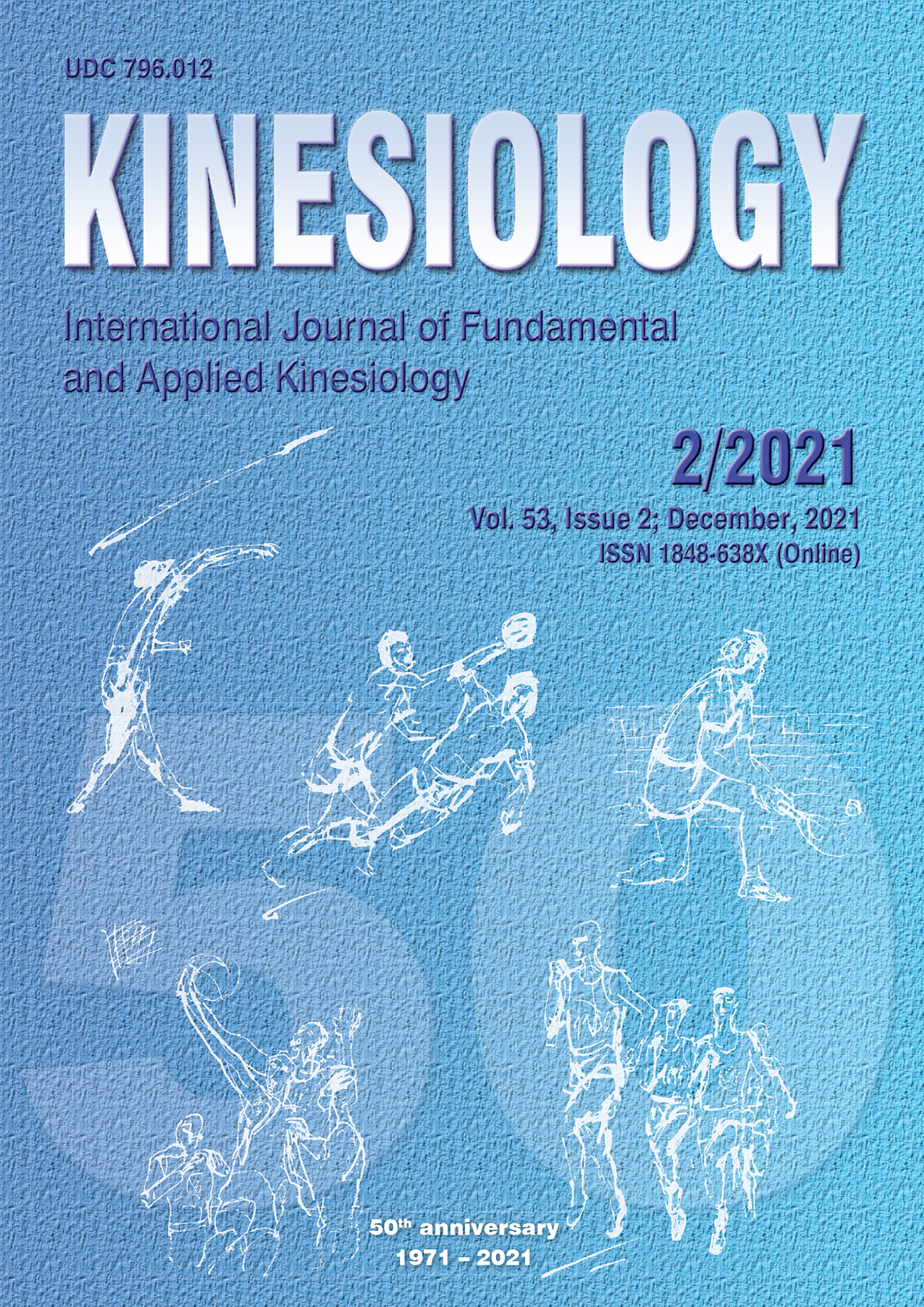CHANGES IN REARFOOT STRIKE PATTERNS OVER CHILDHOOD: A 3-YEAR PROSPECTIVE LONGITUDINAL COHORT STUDY
Abstract
Rearfoot strike (RFS) in children running produces impact forces that give rise to a transient stress wave traveling through the body. It could contribute to the development of injuries. The purpose of this study was to determine RFS prevalence during childhood while running at a self-selected velocity in a prospective longitudinal cohort study. A total of 175 children (68 girls), aged 6 to 14 years, participated in this study. The sample was divided into three age groups (age in 2016): 6-8 years, 9-11 years, and 12-14 years, which were analysed again three years later (2019). A 2D video-based analysis was used to record the RFS. Taking into account all samples, in the jogging trial the prevalence of RFS (an average of both feet) was 86.9% in 2016 and 94.7% three years later; in the running trial the prevalence was 82.6 and 94.4%, respectively. In all samples a significant increase of RFS prevalence was found in both the jogging and running trials for both feet over three years (jogging, left foot, p=.011, right foot, p=.023; running, left foot, p=.001, right foot, p<.001). In girls, there were no significant differences in any conditions. In boys, a significant increase of RFS prevalence was found after three years in both feet (p<.01) in the running trial. This study shows that RFS prevalence in children increases with age and the results may be used to characterize typical running development in children population.
Key words: running, children, growth, foot strike patterns
Downloads
Published
How to Cite
Issue
Section
License

This work is licensed under a Creative Commons Attribution-NonCommercial 4.0 International License.
At Faculty of Kinesiology we recognize that access to quality research is vital to the scientific community and beyond. Kinesiology is non-profit journal and all costs of publishing and peer review process are covered by the publisher itself or other funding sources like Ministry of Science and Education of the Republic of Croatia. Full text papers are also available free of charge at http://hrcak.srce.hr/kineziologija. There are no restrictions on self archiving of any form of paper (preprint, postprint and publisher's version).
Articles are distributed under the terms of the CC BY - NC 4.0
Kinesiology does not charge any fees to authors to submit or publish articles in our journal.


